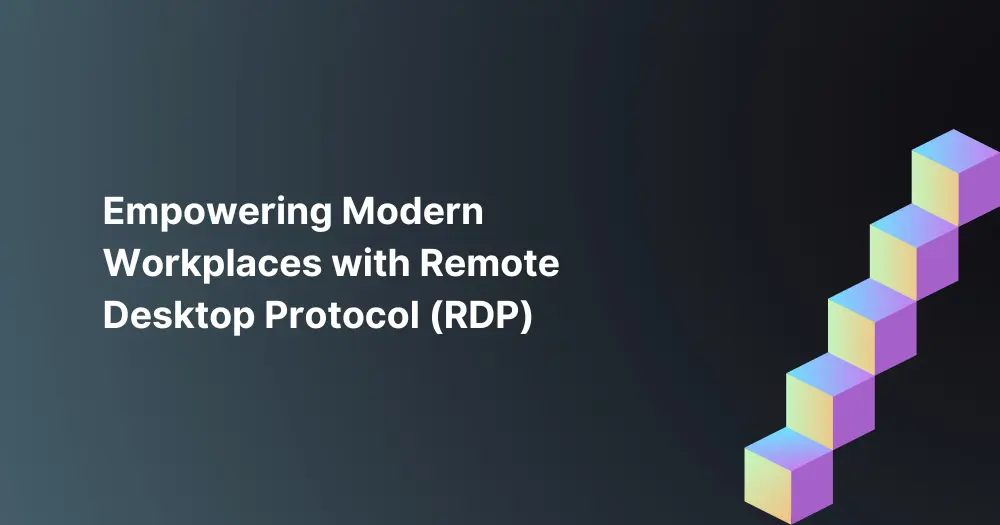
Remote work, also known as telecommuting or teleworking, refers to a work arrangement in which employees work outside of a traditional office setting. It has gained immense popularity in recent years owing to technological advancements, globalization, and the COVID-19 pandemic. This has opened up a range of flexible working options, including hybrid work environments.
The rise of mobile devices and cloud adoption made it easier for people to work remotely and access company data and applications from anywhere worldwide, while facilitating collaboration and communication.
In 2020, remote work gained momentum as the COVID-19 pandemic accelerated its adoption. Many employees transitioned to working from home without other options as businesses were forced to close their offices. Remote work was seen as a strategic response to unforeseen disruptions, showcasing its role in ensuring business continuity and resilience. With the changes in the traditional work setting, Remote Desktop Protocol (RDP) enabled businesses to access office computers remotely, allowing employees to work seamlessly from anywhere with an Internet connection.
Remote Desktop Protocol allows users to connect and control their work desktop computer—creating a virtual connection between the user’s local device and the remote computer, enabling them to view the remote desktop, interact with applications, and access files as if they were physically in front of the remote machine. Microsoft initially developed it, but it is now available in most operating systems.
RDP operates on the application layer of the OSI model. It transfers keyboard and mouse inputs from the local client to the remote host while simultaneously transmitting the graphical user interface (GUI) from the host back to the client.
The core components of RDP include:
RDP is a powerful tool that offers a range of features and capabilities that are crucial for businesses aiming to optimize their workflows and adapt to the evolving landscape of remote work. Let’s explore the key features that make RDP an invaluable asset for businesses in today’s digital age.
Efficient Data Transfer
RDP is designed for efficient data transfer between local and remote machines. It optimizes bandwidth use and employs efficient data compression techniques to minimize latency. RDP prioritizes transferring screen images, keyboard input, and mouse movements, ensuring a responsive and lag-free user experience.
Multimedia Support
RDP facilitates the smooth and uninterrupted transmission of multimedia content. You can easily stream videos, conduct virtual presentations, and collaborate on multimedia projects—allowing a seamless and immersive multimedia experience even in remote sessions.
Device and Resource Redirection
RDP allows you to redirect local devices, such as printers, scanners, and USB storage devices, to a remote desktop. It creates a cohesive environment where you can seamlessly access and utilize local resources remotely.
Cross-Platform Compatibility
As mentioned above, Microsoft first developed RDP, but various operating systems now support it, including macOS, Linux, and mobile platforms. Its cross-platform compatibility allows you to connect to a remote computer from various devices, enhancing its versatility.
Session Persistence
RDP’s session persistence feature is invaluable for users who need to continue their tasks seamlessly, even when network connections are intermittent. With this feature, you can disconnect from a remote session and resume your work from where you left off without losing data or progress.
Multiple-User Support
RDP allows multiple users to access and use a remote server or desktop simultaneously. This feature enables each user to have their own isolated session, allowing real-time interactions and collaboration among team members.
Clipboard and File Transfer
RDP enables seamless clipboard and file transfer between the local and remote systems. You can streamline data exchange during remote sessions by seamlessly copying and pasting text or transferring files.
Authentication and Encryption
RDP ensures secure and versatile remote connections, supporting security features, authentication, and encryption protocols. It prioritizes user security by necessitating authentication before session initiation and uses robust encryption algorithms to ensure that the data is secure and cannot be intercepted by unauthorized users.
Application Publishing
RDP allows administrators to publish specific applications rather than providing full desktop access. This is useful for delivering a specific set of applications to remote users.
RDP’s support for hybrid work models and secure gateway access solidifies its role as a reliable and effective solution for businesses embracing remote work paradigms. With RDP, employees can access their work resources using any device and location without compromising security. This makes RDP an ideal solution for businesses that want to enable their employees to work remotely while maintaining the same level of productivity and security as in the office.
Embrace the benefits of remote work while protecting your business’s data and system. BlackPoint IT understands the unique challenges and opportunities associated with RDP implementation. We offer comprehensive managed IT solutions and help businesses harness the power of RDP while ensuring the highest levels of security and compliance. Schedule a personalized consultation with us to learn how we can help you secure and optimize your RDP environment.